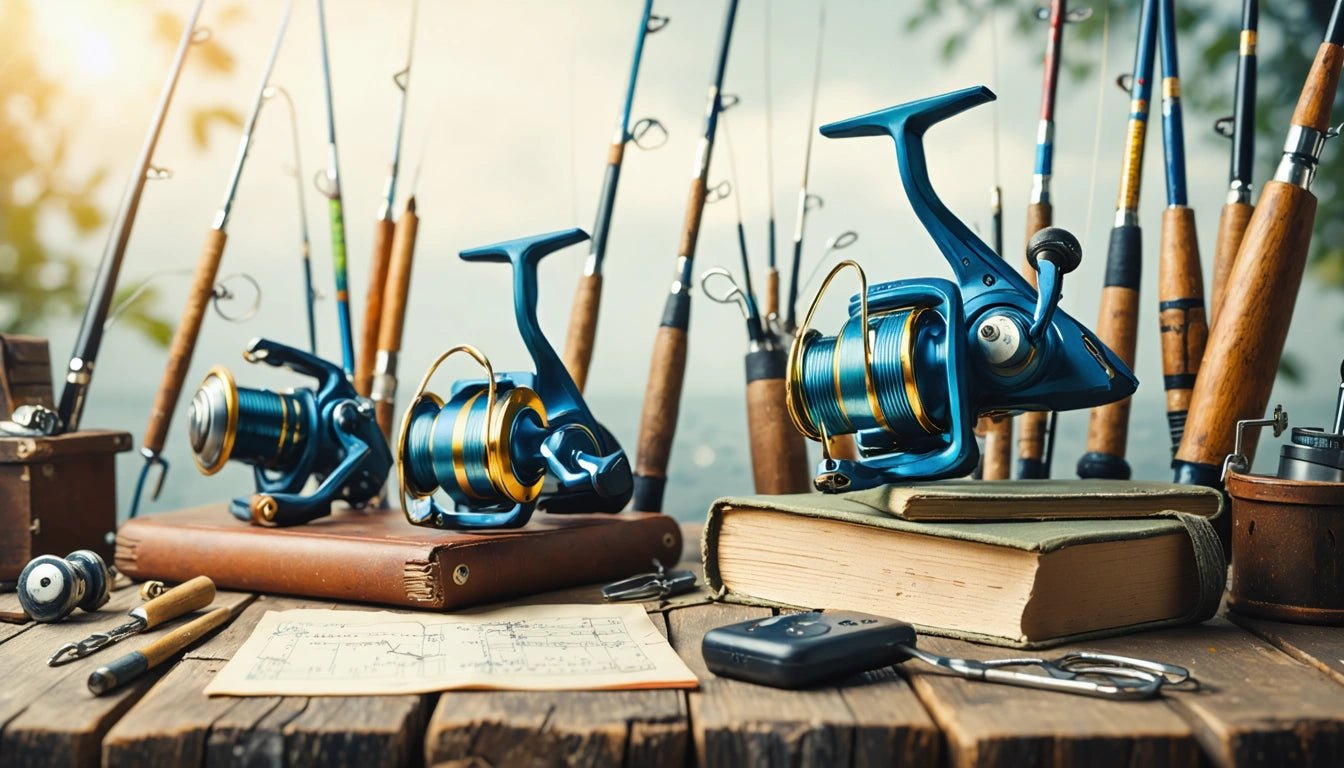Table of Contents
- The Origins of Zebco: From Zero Hour Bomb Company to Fishing Innovation
- The Evolution of Anti-Reverse Technology in Zebco Reels
- When Did Zebco Start Using Plastic Anti-Reverse?
- The Zebco Scottie 66: A Collector's Timeline
- Modern Innovations and Material Science in Fishing Reels
- The Lasting Legacy and Future Directions of Zebco Technology
Exploring the Evolution and Milestones of Zebco Fishing Reels
The history of recreational fishing equipment tells a fascinating story of innovation and adaptation. Among the most significant contributors to modern angling technology is Zebco, a company whose reels revolutionized fishing accessibility. This exploration traces key developments in Zebco's history, with particular focus on when they implemented plastic anti-reverse mechanisms and the production timeline of the collectible Scottie 66 model.
The Origins of Zebco: From Zero Hour Bomb Company to Fishing Innovation
Zebco began not as a fishing company but as the Zero Hour Bomb Company in Tulsa, Oklahoma in the 1940s. Originally manufacturing timing devices for oil field operations, the company pivoted when R.D. Hull, a Texas watchmaker, approached them with his revolutionary design for a covered fishing reel in 1947. This enclosed, fixed-spool design eliminated the common problem of line tangling that frustrated many anglers.
The company's first fishing reel, the Standard, was introduced in 1949. Shortly thereafter, they changed their name to Zebco, using the initials of their original company name. This transition from industrial equipment to recreational products mirrors other companies that have undergone significant ownership and industry changes to adapt to market opportunities.
The Evolution of Anti-Reverse Technology in Zebco Reels
Anti-reverse mechanisms are crucial components in fishing reels, preventing the handle from spinning backward when a fish pulls on the line. Early Zebco models featured metal anti-reverse systems that, while functional, had limitations in durability and smoothness of operation.
The development of anti-reverse technology in fishing reels parallels other manufacturing innovations where traditional materials were replaced with modern alternatives. Similar material evolution can be observed in various industries, from eyewear manufacturing to writing implements.
When Did Zebco Start Using Plastic Anti-Reverse?
Zebco began incorporating plastic anti-reverse mechanisms in their reels during the late 1960s to early 1970s. This transition marked a significant technological advancement in reel design. The shift to plastic components offered several advantages:
- Reduced weight, making reels more comfortable for extended use
- Improved corrosion resistance, especially important for saltwater fishing
- More cost-effective manufacturing process
- Enhanced smoothness in the anti-reverse action
The Model 33, one of Zebco's most popular reels, was among the first to feature the plastic anti-reverse system around 1971. This innovation helped solidify Zebco's position as a leader in accessible fishing technology. The company's willingness to adopt new materials reflects a similar pattern seen in other consumer product evolutions, such as those in food packaging industries.
The Zebco Scottie 66: A Collector's Timeline
The Zebco Scottie 66 holds a special place in fishing history as a limited edition reel that has become highly sought after by collectors. This distinctive model was manufactured in the mid-1970s, specifically between 1974 and 1976, as a commemorative edition celebrating fishing legend Scottie Braswell.
What made the Scottie 66 special was not just its limited production run but also its technical specifications. It featured:
- A modified version of the popular Model 66 design
- Custom cosmetic elements including Braswell's signature
- Advanced drag system for its time
- Specialized gear ratio optimized for certain fishing techniques
The Scottie 66 exemplifies how specialty products can develop cult followings, similar to how specialized rolling supplies in the cannabis industry have garnered dedicated consumer bases through limited editions and collaborations with industry personalities.
Modern Innovations and Material Science in Fishing Reels
Today's Zebco reels continue the tradition of innovation while incorporating modern materials science. Contemporary models feature advanced polymers, carbon fiber components, and precision-engineered gearing systems that would have been unimaginable when the company first introduced plastic anti-reverse mechanisms.
Modern Zebco reels benefit from computer-aided design and testing, resulting in products that are lighter, stronger, and more reliable than their predecessors. This evolution mirrors advancements in other consumer products where material science has driven significant improvements, such as in beverage container development.
The Lasting Legacy and Future Directions of Zebco Technology
Zebco's innovations, from their original enclosed reel design to the introduction of plastic anti-reverse mechanisms and specialty models like the Scottie 66, have left an indelible mark on recreational fishing. The company's willingness to adopt new materials and technologies has helped democratize fishing by making equipment more affordable, reliable, and user-friendly.
Looking forward, Zebco continues to explore sustainable materials and manufacturing processes while maintaining their commitment to accessibility. Their journey from metal to plastic components represents just one chapter in an ongoing story of adaptation and innovation that parallels developments in many other industries, from lighting technology to modern packaging solutions.
As fishing technology continues to evolve, the historical milestones of when Zebco introduced plastic anti-reverse mechanisms and produced the collectible Scottie 66 reel serve as important reference points for understanding how far recreational fishing equipment has come and where it might be headed in the future.



















